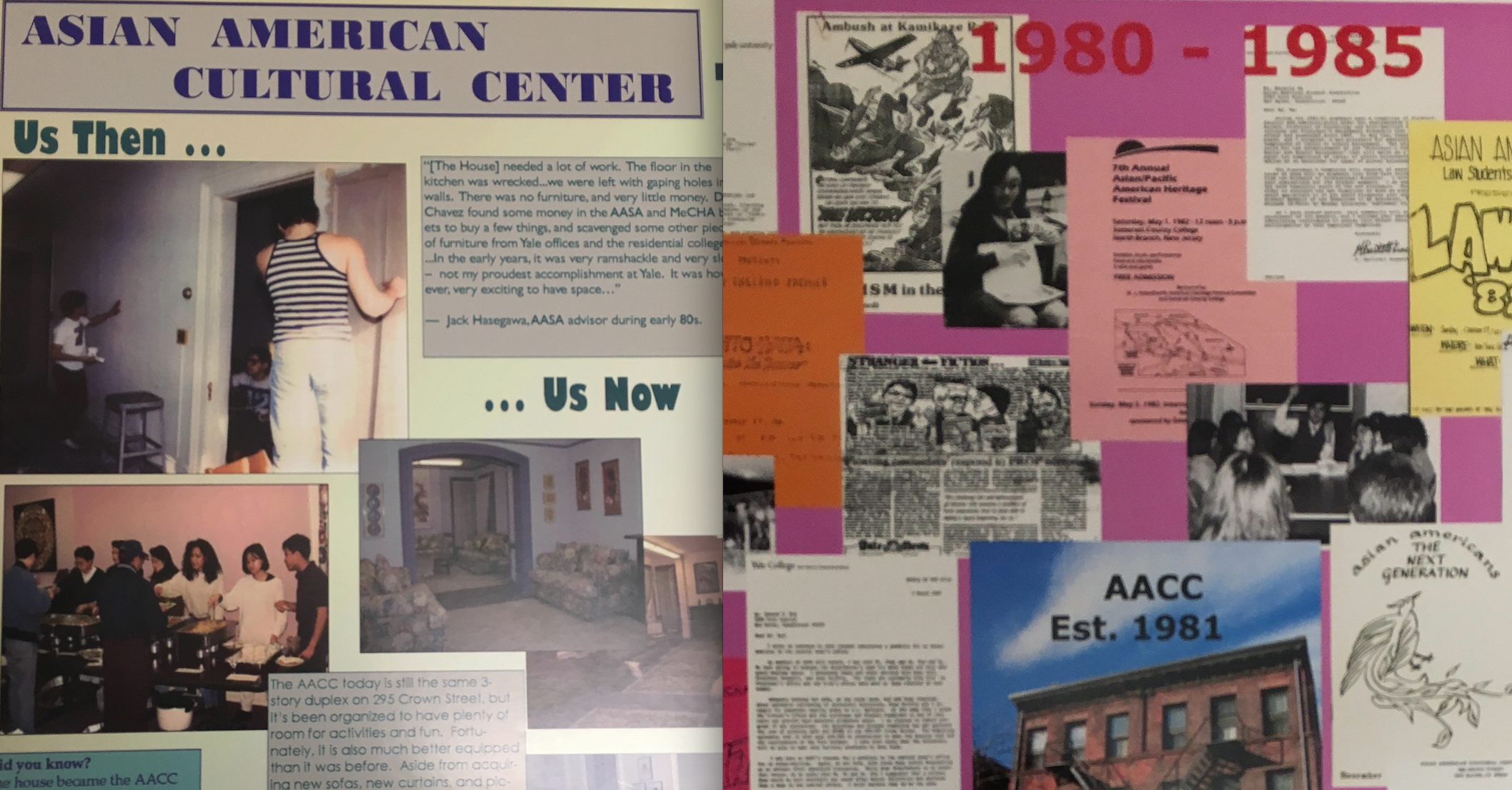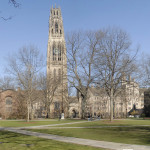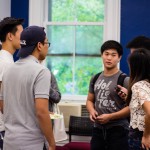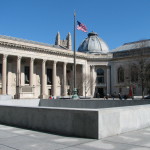Grant Din is a Yale alum of the Class of 1979. He currently serves as the Community Resources Director at the Angel Island Immigration Station Foundation in San Francisco, where he works on research and educational projects relating to Angel Island immigration history. During his time at Yale, he was an active student leader for the Asian American Students’ Alliance (AASA) and served as a “floating counselor” (now known as Peer Liaisons). In this oral history interview, he discusses one of the most important meetings that Yale Asian American students organized in 1978, to ask President Bart Giamatti (President of Yale from 1978-1986) for an Asian American Cultural Center. Grant calls this story the “shoe day” meeting. –Janis Jin
What was the legendary “shoe day” meeting, and how did the idea for it come about?
When I was at Yale, AASA used to have our meetings in the basement of Bingham, in two small offices. The first one was probably smaller than the average living room in a suite, and the second one was probably a bit bigger than a large library carrel. We wanted to get a meeting with the president because we felt that we needed a larger space for Asian American students. The [Afro] American Cultural Center had just been established about ten years earlier so we were in awe of and envious of the beautiful center that they had. In the fall of 1978, we got a meeting set up with President Giamatti, and Nick Chen (’79), who was a very active member of AASA for all four years, had the brilliant idea that we should have the meeting at our office instead of at his, so the president could see how small our space was.
President Giamatti agreed to it. So we went around to every Asian American student we knew, even if they had never come to any AASA events, and we said to them: if you come to one event in your four years here, come to this one. We had the idea for everyone to take their shoes off, which is a common cultural practice in Japanese and Chinese homes. So everyone left their shoes out in the hallway, and when President Giamatti came down to the Bingham basement, he was greeted by a sea of at least 100 shoes leading to the door of our small office. It was amazing to see all these shoes just covering the entire floor. There were students in every square inch of the office, and we had one chair set aside for President Giamatti. He brought his assistant with him so we had to clear out more space for a second chair. I don’t recall exactly what was said at the meeting, but we showed the president that we clearly needed more space and we said we would appreciate him trying to make things possible for us to have a cultural center.
Within the next year, he started meeting with members of AASA to discuss the possibility of a new center. Mary Li Hsu (‘80) took a really big role in these discussions, and she later became the Asian American dean for quite a few years. The center was eventually established in 1981. It was originally shared with MEchA, but now La Casa and the AACC have their own separate buildings. I think the “shoe day” meeting made a big impact in showing the president that Asian American students really needed a larger space than the small offices in the Bingham basement that we had been meeting in.
How did you get so many students to come out to this meeting?
It was pretty much just word of mouth. We had a pretty big base of AASA members, but a lot of people just knew us from social events, or discos, and things like that. There also weren’t that many Asian American students at the time relative to today – there were about 400 total, and my class had about 75. So we knew pretty much every Asian American by name or face. We had a directory called the “Yellow Pages,” so we had a list of all the Asian American students by residential college and dorm. We had AASA members in each residential college hand out flyers to all the Asian American students in that college, and back then there were landline telephones in each dorm room so we also used those to call students as well.
Did AASA have a faculty advisor at the time to help the students who were organizing?
No, we didn’t have an advisor and didn’t have any faculty working with us. The only Asian faculty that were teaching at Yale were mostly professors from Asia and didn’t consider themselves “Asian American,” and none of them taught Asian American Studies. Many of them were language professors or teaching in science and math departments. We didn’t have any Asian American administration in the residential colleges either. So it was up to us. Getting the Asian American Cultural Center was entirely a student-driven and student-run effort. Sometimes it felt like we didn’t really know what we were doing, but we did our best.
In addition to having a cultural center, what else do you think has changed about the Asian American student community since the time you were at Yale? Have you been to the AACC and seen the center that we have now?
Back then, most of the Asian American students were Chinese and Japanese, and I was at Yale before the influx of more Korean, Southeast and South Asian students. The population is now much more diverse among the different Asian ethnic groups, reflecting the tremendous post-1965 and 1975 growth in Asian Americans, which is really great to see.
There are also a lot more Asian American organizations now to meet the needs of this diverse student population. Back in the late 1970s, it was mostly just AASA and a Chinese students’ organization, which was mostly students from overseas; I think the Korean American group started in the late 1970s. I think a lot of the West Coast students before us brought a sense of an Asian American identity, rather than just Chinese, Japanese, Korean, or Filipino.
I went back for the Inaugural Asian Alumni Reunion in 2014, which was really fun. We were all really happy to hear about the new programming at the AACC, and it was great to see the new center. We’re excited to hear about programming moving forward, and alumni really want to support the students in any way that we can.



